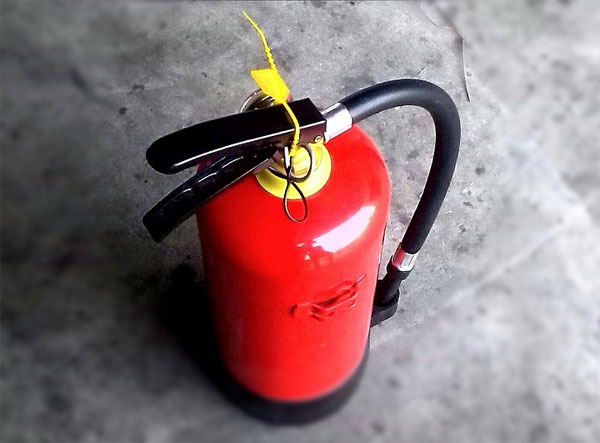
Fire extinguishers are divided into four categories, based on different types of fires. Photo: Wikimedia
Fire in the workplace can be a very dangerous and terrifying experience. Anyone who doesn’t know what to do in the event of a fire is not only a danger to themselves but also everyone around them which is why it’s extremely important to know these basic fire prevention and safety tips.
What to do if you hear the fire alarm
-
Leave the building immediately. Treat every alarm as though it is a real emergency, even if the initial source is unknown. Do not silence or reset the alarm.
-
Call 9-1-1. All fire alarms are to be investigated by the Fire Department.
-
If you cannot exit, take refuge. Stuff wet cloth around cracks in doors and vents to seal the room from smoke. Do not try to break windows because flames and smoke can enter from outside. Open a window crack if you need air.
-
Use a telephone or hang something in the window to signal for help. If you see smoke, stay low to the floor and keep a wet cloth over your nose and mouth, breathe through your nose only.
-
Use the nearest exit. Don’t stop to collect your belongings and never use elevators during a fire emergency. Walk quickly but don’t run. Close the doors behind you to help limit the spread of smoke and fire throughout the building.
-
Go to the Fire Assembly Point and report to the Fire Warden. Your employer or site foreman should have a fire prevention and safety plan with a rally point in place.
-
Don’t return to the building unless instructed by the fire department to do so.
What to do if you discover a fire
-
Sound the fire alarm. No matter how big the fire is, the first thing you should do is alert or alarm.
-
Fight the fire only if it’s safe to do so. Know fire classifications and proper fire extinguisher use. Do not fight a fire if it is bigger than a waste paper bin, one fire extinguisher is not enough, or your efforts are not reducing the size of the fire.
-
Exit immediately if smoke is affecting your breathing, you cannot see a way out, or gas cylinders or chemicals are involved. Evacuate as per normal fire procedure. Review what to do if you hear the fire alarm.
-
Inform the Fire Warden. Call 9-1-1, notify the local fire fighting unit of the location, size and strength of fire and if anyone is in great danger.
Fire Classifications
Fire extinguishers are divided into four categories, based on different types of fires. Some fires may involve a combination of these classifications. Each fire extinguisher also has a numerical rating that indicates the amount of fire the extinguisher can handle. The higher the number, the more fire-fighting power.
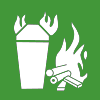 Class A - Free burning materials, paper, wood, plastics etc.
Class A - Free burning materials, paper, wood, plastics etc.
Class A fires involve ordinary combustible materials such as paper, wood, cardboard, and most plastics. The numerical rating on these types of extinguishers indicates the amount of water it holds and the amount of fire it can extinguish.
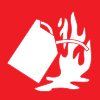 Class B - Flammable liquids, petrol, meths, solvents etc.
Class B - Flammable liquids, petrol, meths, solvents etc.
Class B fires involve flammable or combustible liquids such as gasoline, kerosene, grease and oil. The numerical rating for class B extinguishers indicates the approximate number of square feet of fire it can extinguish.
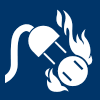 Class C - Flammable gases, methane, hydrogen etc.
Class C - Flammable gases, methane, hydrogen etc.
Class C fires involve electrical equipment, such as appliances, wiring, circuit breakers and outlets. Never use water to extinguish class C fires - the risk of electrical shock is far too great! Class C extinguishers do not have a numerical rating. The C classification means the extinguishing agent is non-conductive.
 Class D - Metals, potassium, sodium, magnesium etc.
Class D - Metals, potassium, sodium, magnesium etc.
Class D fire extinguishers are commonly found in a chemical laboratory. They are for fires that involve combustible metals, such as magnesium, titanium, potassium and sodium. These types of extinguishers also have no numerical rating, nor are they given a multi-purpose rating - they are designed for class D fires only.
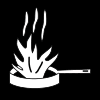 Class K - Cooking fats.
Class K - Cooking fats.
Class K fire extinguishers are for fires that involve cooking oils, trans-fats, or fats in cooking appliances and are typically found in restaurant and cafeteria kitchens. Geometric symbol (black hexagon). Never use water on grease fires.
Electrical Fire
Electricity can be involved in any class of fire. Never use water or foam to put out an electrical fire. Only a dry powder or ‘multi-purpose’ extinguisher should be used, typically labelled ABC.
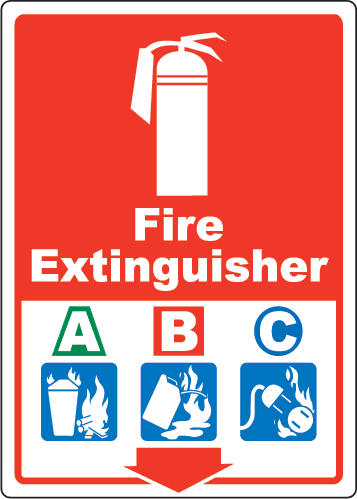
Fire extinguisher location sign. Class ABC.
Fire Extinguisher Types
-
Water extinguishers or APW extinguishers (air-pressurized water) are suitable for class A fires only. Never use a water extinguisher on grease fires, electrical fires or class D fires - the flames will spread and the fire will grow larger.
-
Dry chemical extinguishers come in a variety of types and are suitable for a combination of class A, B and C fires. These are filled with foam or powder and pressurized with nitrogen.
-
BC - Most common type of dry chemical extinguisher. These extinguishers are filled with sodium bicarbonate or potassium bicarbonate that leaves a mildly corrosive residue which must be cleaned immediately to prevent any damage to materials.
-
ABC - Multipurpose dry chemical extinguisher. These extinguishers are filled with monoammonium phosphate, a yellow powder that leaves a sticky residue that may be damaging to computers and other electronics.
-
Carbon Dioxide (CO2) extinguishers are used for class B and C fires. These extinguishers contain highly pressurized carbon dioxide, a non-flammable gas. The high pressure causes bits of dry ice to shoot out the nozzle. They are not effective on class A fires because they may not displace enough oxygen, allowing the fire to re-ignite. Unlike dry chemical extinguishers, CO2 is a good choice for use on electronics since it doesn’t leave a harmful residue.
Note: IEEE 450-2010 Section 4.1 notes that some battery manufacturers do not recommend the use of CO2 Class C fire extinguishers due to the potential of thermal shock.
How to help prevent fires
Fight fire with prevention. Understanding sources of ignition and fuel can help you recognize potential hazards before a fire starts.
Sources of Fire Ignition
- Smoking
- Electrical equipment
- Heaters
- Contractors tools and equipment
- Arson
Fuels
- Paper & Boxes etc.
- Expanded polystyrene beads
- Plastics
- Solvents
- Carpets
- Furniture
- Waste materials
